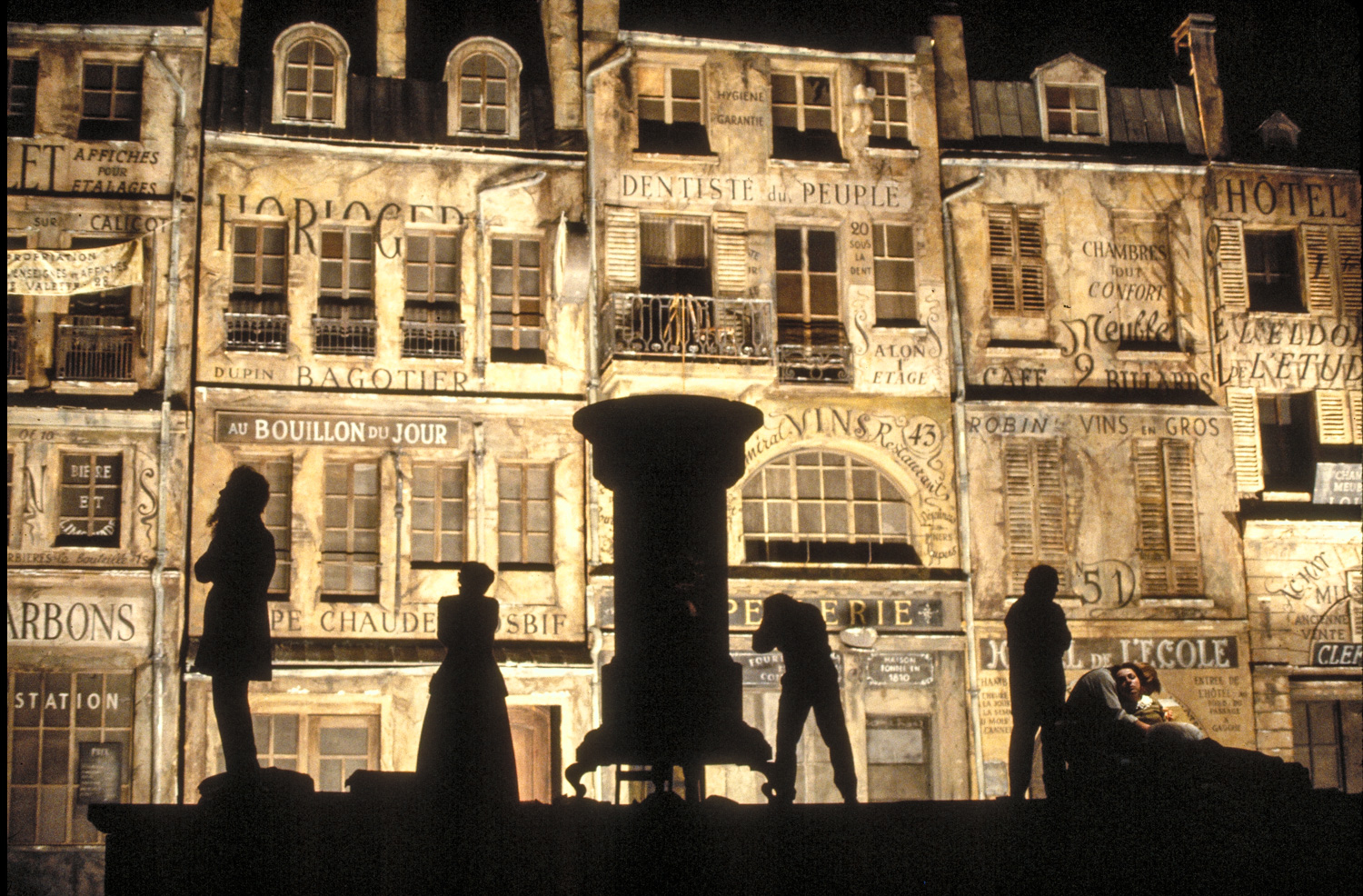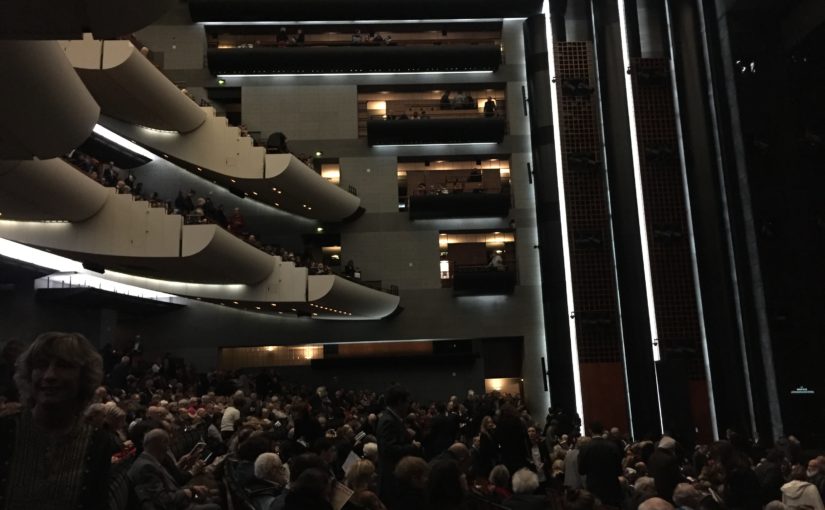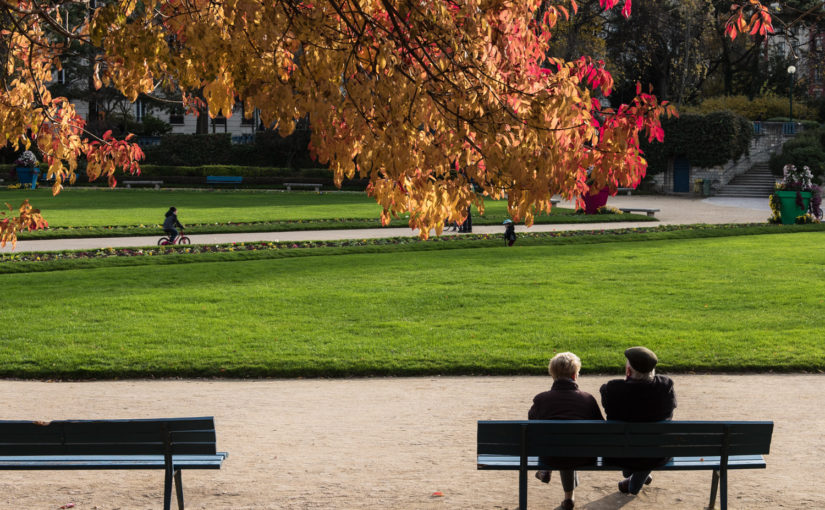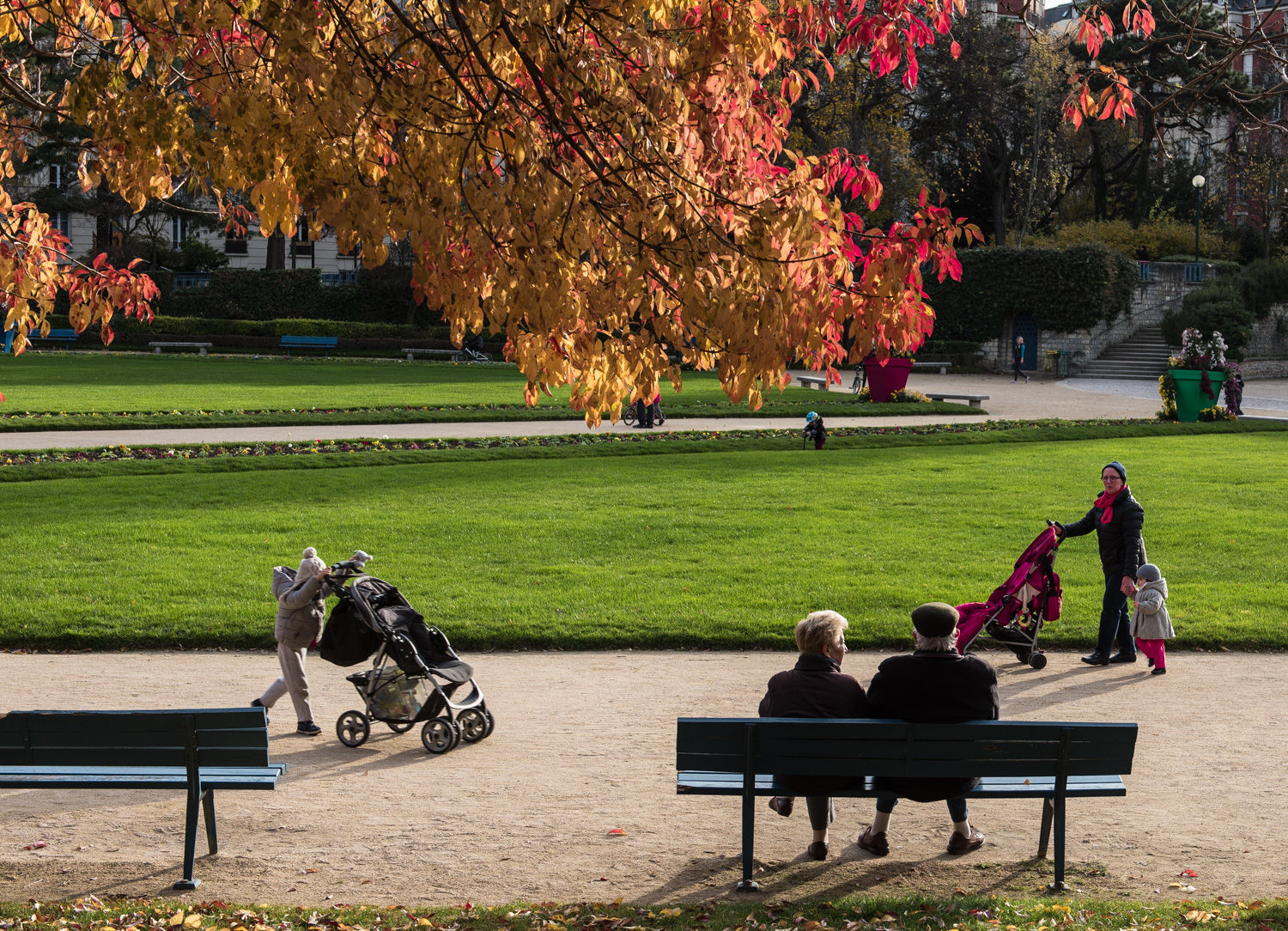Formerly known as La Bohème.
Unusual, provocative, a new approach, absolutely, but how it relates to the music and libretto I cannot tell you. It seemed like the management had double-booked the theatre. There were two unrelated productions on the stage simultaneously. On stage-right you have Mimi and Rodolfo declaring their love, falling out, and reuniting before the inevitable tragic end, while on stage-left mute spacemen wander around a white moonscape of an unnamed planet. Except when they’re inside the doomed spaceship and the spacemen are floating outside the window. They never seem to merge until the end when instead of a quiet death, Mimi walks through an annoying, shimmering silver curtain and wanders off the planet.
I get it. I think. In a world without hope, only love and art make sense. Or something like that. But all this spaceship nonsense was totally unnecessary and impossible to reconcile with the action. So the production team led by Claus Guth stopped trying and just let the spacemen hang around while the lovers played out their fate.
I can imagine the early meetings when Mr. Guth presented his concept:
“To make this romantic trifle relevant to today, we must move ahead in time to make the demise of our civilization real. Exaggerate, exaggerate, it’s the only way. Their love can only be meaningful to us if it takes place in a world where love is impossible. Their art can only touch us if it exists beyond the end of the world.”
“Brilliant, Claus. Make it happen. Make this music speak to us again.”
Then they get into production and the questions begin: “Excuse me Claus, but if we open on a spaceship, how do we bring in Mimi?”
“No problem. Stop thinking literally. We do not need to hold the hand of the audience. We’ll just bring her in as if she was in another room. It’s a big ship.”
“They were on the same ship but had never met?
“As I said, it’s a big ship.”
“Excuse me, sir, but is it big enough to hold the Café Momus?”
“Hmm. Yes. I see what you mean. Think, people! Outside the box.”
“I’ve got it, sir. It’s a dream. Rodolfo takes a little nap and dreams the left bank of Paris, which, of course, doesn’t exist anymore. That world is dead.”
“Brilliant. That’s what I mean, people, outside the box. Now, let me tell you something else I hate about opera. The house is huge, the singers are small, the world is dying. The audience has to see the emotions to feel them but they’re so far away and they’re checking their phones or reading those damn titles. How do we grab them?”
“I’ve got it sir: video. We bring a camera on stage- it will look like all the other tech spacey garbage already on stage – and we project a huge close-up of the singer on the wall behind him.”
“Good, I like it. But remember, exaggerate! We’re talking really close. I want to see his tonsils.”
“I’m not sure the Rodolfo still has tonsils, sir.”
“Nobody likes a smart-ass, junior. OK, video, I like it but it’s not enough and we can’t do it for everyone. How about a mime?”
“Everybody hates mimes, sir. Those guys on the Pont des Arts can’t even make a living anymore.”
“Good. They’ll work cheap.”
“But no one likes them, sir.”
“Exactly why I want them. This audience needs a good slap in the face.”
“The critics will hate it. The audience will boo when you take your bow, maybe even during the performance.”
“Perfect. Better to give them something to hate than something they’ll forget. What time is my train to Berlin?”
A final word: not even this kind of nonsense can kill this music:
Conducted by Gustavo Dudamel with Sonya Yoncheva as Mimi and Atalla Ayan as Rodolfo, it really was possible to close your eyes and listen to Puccini.
This is a photograph from Jean-Pierre Ponnelle’s production of La Boheme in San Francisco in 1978. At the time, it was considered to be provocative, the work of a willful director imposing an inappropriate vision on a classic. But it was beautiful, affecting, illuminating and it has stayed with me all these years.











